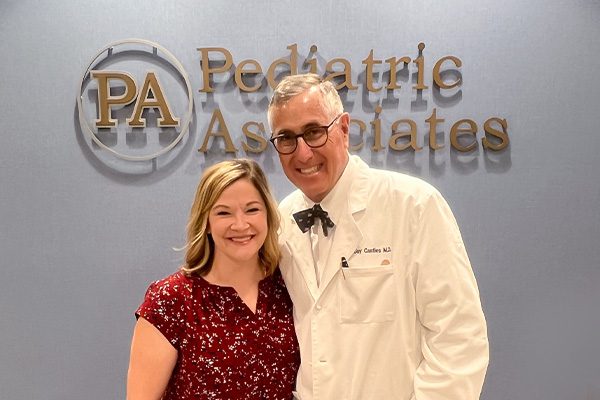Onsite clinics are a rising trend in the workforce, promising everything from greater employee productivity and better employee health to impressive patient engagement and ROI. Unfortunately, the reality often fails to live up to the hype.
Here are 8 things onsite clinic vendors don’t tell their customers—either because they haven’t thought about these issues or don’t have an adequate solution.
1. You can’t affect the total cost of healthcare through primary care alone.
Most onsite clinics aren’t set up to decrease the total cost of healthcare. That’s because they continue to rely on an outdated primary care model that focuses on transactional healthcare services rather than forming long-term, meaningful relationships of trust with their patients.
While having a conveniently-located clinic can reduce Urgent Care and ER visits, this model will never impact chronic conditions or overall patient health. True ROI comes from genuine patient engagement and appropriate care plans, not one-time healthcare transactions.
2. You can’t address the most complex and costly diagnoses through a primary care model.
In order to truly impact health care costs, you have to have a solution that addresses the 6% of patients facing complex diagnoses as well as the patients who are managing chronic illnesses. In reality, most onsite clinic vendors don’t have a solution for these patient populations, even though they account for over 80% of the customer’s healthcare spend. The best they can do is provide quality referrals and hope that the patient follows through.
Proactive MD addresses complex and costly diagnoses by giving patients access to the nation’s only Smart Care Medical Centers and providing a Patient Advocate who remains connected to the patient throughout the entire healthcare journey. This approach results in better outcomes for patients, more appropriate treatment plans, and decreased costs for our customers.
3. The traditional pricing structure puts all financial risk on the customer.
Onsite clinics can feel risky because the base price that the customer is quoted is typically far less than the actual cost incurred. Traditional employer sponsored onsite clinics operate under a variable, pass-through model that places the majority of the financial risk on the customer, including turn-over and PRN. Proactive MD assumes the variable risk on behalf of the customer, providing predictable, fixed fee pricing with limited pass-through costs.
4. Many traditional clinics don’t fully guarantee their performance.
While many onsite clinic vendors highlight the fact that they put their management fees at risk, they aren’t truly putting a significant portion of their total fees at risk. For example, 100% of a clinic’s management fees could translate into just 3% of the total cost at risk. Proactive MD operates in a fully transparent way, putting at least 20% of our total fees at risk.
5. Nurse Practitioner models are limited in the scope of services they can offer.
Most onsite clinic vendors provide a Nurse Practitioner model rather than a physician-based model. While both MDs and NPs are capable, valuable healthcare professionals, by law nurse practitioners aren’t able to perform many of the procedures and services that board-certified physicians can offer.
This is particularly true when it comes to more complex, costly, and chronic conditions that require long-term management and oversight. In these cases, there is no replacement for the physician-patient relationship. NP-led clinics can offer thorough, effective initial care but must make referrals for more complex issues. Those costs typically pass-through to the client, decreasing the overall ROI. More importantly, it’s impossible to impact the total cost of healthcare in a meaningful way until you stop referring everything to specialists. Offering what amounts to an Urgent Care center doesn’t solve the need for broad-scope primary care or keep patients away from high-cost specialists.
6. You can’t measure ROI by looking only at the transactional volume of the clinic.
Most onsite clinic vendors project an impressive ROI for the clinic by simply calculating direct cost avoidance, which is based on cost-per-transaction according to the community fee schedule. For example, if a patient visits the clinic for a flu shot, and the clinic vendor knows that visit would have cost $65 out in the community, then the vendor claims to have saved the customer $65.
The problem with this method is that it calculates from a hypothetical. A visit to a more conveniently-located clinic doesn’t indicate whether a patient would have sought care in the community and what the actual expense would have been. Your ROI should look at the total impact to healthcare rather than just the isolated, hypothetical savings generated by driving volume to the onsite health center. Proactive MD recognizes that the biggest drivers for employers’ rising healthcare costs are high cost claimants (especially expensive, non-emergency outpatient procedures), undiagnosed and unmanaged chronic illness, high referral rates to subspecialty care for PCP-treatable conditions, and prescriptions habits not optimized to the plan’s formulary. Therefore we use claims data to find opportunities to truly impact the total cost of care and drive down high cost claimants, maximize reverse referrals, and use a risk stratification engagement model geared toward bending the cost curve. While diverting care to the clinic is important, it is only one part of the solution to impact the total cost of healthcare.
7. You can’t change patients’ involvement in their own health through only a doctor-patient relationship.
While the doctor-patient relationship is foundational for high-quality care, it’s not enough to affect behavioral change in your patient population. Most onsite clinic vendors claim to impact long-term health and wellbeing and manage chronic conditions—but in reality they don’t have a solution in place that accomplishes these goals.
Helping patients become more actively involved in their own health requires more than care coordination, referrals, and follow-ups. In order to fully impact patient health, onsite clinics must advocate for patients, address the social determinants of healthcare, and help patients navigate the system. A model that fully engages and connects with patients through the entire continuum of care is uniquely transformational. This level of care gives patients hope and motivates them to make better choices for their health.
8. Too often, patient engagement is the customer’s responsibility—or part of the healthcare provider’s role.
Most onsite clinics make patient engagement the responsibility of the healthcare provider or the customer—often tying their ROI guarantee to engagement and then decreasing their guarantee accordingly.
Of course, the customer is too busy running a business to effectively manage patient engagement. Similarly, running a clinic well prevents the physician or nurse practitioner from completing other important tasks like patient engagement and care coordination. As a result, customers either have to hire someone to drive patient engagement, assuming all the costs and risks of that decision, or else accept lower engagement and lower ROI.
The traditional onsite clinic model promises high patient engagement and personal attention but, in practice, often shifts back to a Minute Clinic model, only providing transactional services. Proactive MD solves this problem by providing customers a dedicated onsite Patient Advocate who is responsible for patient engagement. This key team member develops meaningful relationships with patients both inside and outside the clinic, eliminating obstacles and helping patients access the care they need.
Replacing traditional primary care with an onsite version of the same thing doesn’t solve the problem.
While traditional onsite clinics can make transactional health services more convenient for your employees, they often fail to deliver on their larger promises because they begin from the wrong premise—only providing onsite services rather than a complete healthcare solution.
Proactive MD takes responsibility for outcomes beyond the clinic walls and for the patient’s overall healthcare experience. The result: greater patient engagement, improved health outcomes, and lower overall healthcare costs.




